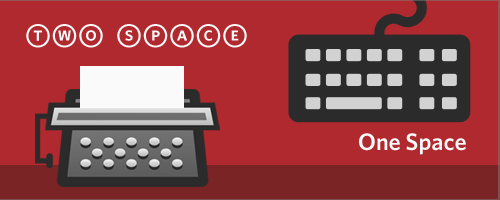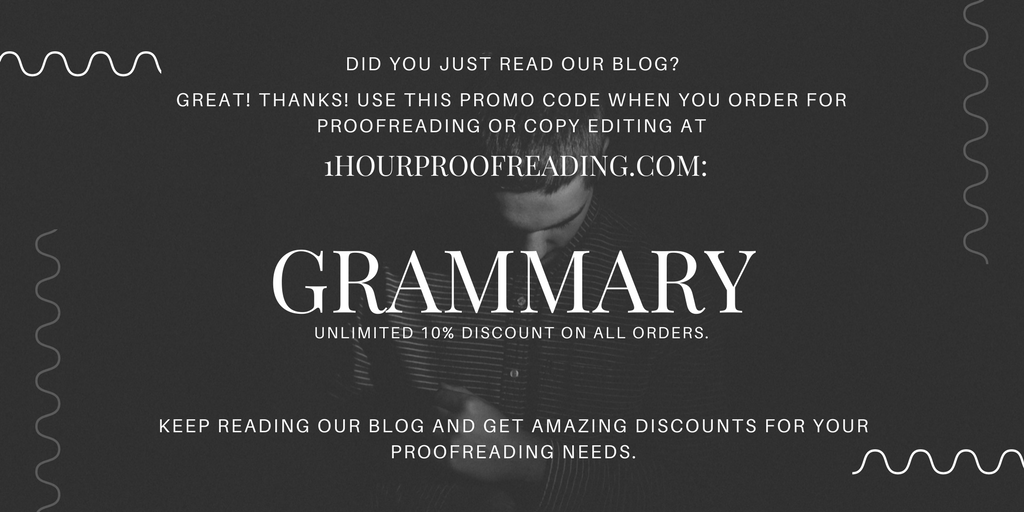Grammar Chaos: Seeing Double
Posted on Jan 13, 2019
When typing sentences, do you hit the space bar twice or just once? If you’re wondering why someone would double-space after sentences, well, you were probably born in the late 1990s or in the 2000s, so read on to find out.

One of the hottest debates in editing these days involve the humble space bar. Apparently, people are still arguing whether or not a double space is required after sentences, considering that we all use computers. For someone who’s been using computers all their life, this may seem like a no-brainer. However, let’s go back to a time before computers were as sleek and small as they are today.
When typesetting was new, all characters were given the same space to occupy. For example, a lowercase “i” would have to take up the same space as a lowercase “m.” This is called monotype typesetting. To make it easier for everyone to read each sentence, typesetters separated words with one space and separated sentences with two spaces. This rule was eventually carried over to typewriting. Anyone who learned how to type on a typewriter was taught that two spaces must be added after any punctuation mark that ended a sentence. Once computers rolled out, however, the rule went right out the door, so anyone who started writing using programs such as WordPad or Microsoft Word weren’t taught the double-space rule.
Today, many typists still follow the double-space rule, which has become obsolete. Why, you ask? This is because in the days of monotype typesetting, all available typing devices only used one font. Ancient typesetting was done with blocks of metal or wood that were arranged and inked together. Same goes for typewriters. When you hit the keys on a typewriter, they stamp the characters immediately on paper, which means each stamp must be of equal size and arranged consistently.

Now that we have computers, we also have a wide variety of fonts. These new fonts adjust the spacing to the size of the characters. For example, the lowercase letters “j,” “l,” “i,” “t,” and “f” all take up one-half of a unit of space whereas the lowercase “m” and “w” take up one and a half units of space. This makes the job of typesetters easier.
Despite all this, some researchers claim that the double-space rule actually helps make reading easier. However, one study that asserted this seems a bit weird. One, it used Courier New, a font style which essentially mimics typewriter font (check out for yourself). Two, the study was conducted on a small sample size, which may imply that the difference is actually not that significant compared to a larger, more diverse population. Finally, the results weren’t even substantial, as only 1% of the students studied were able to read the double-spaced text faster than the single-spaced text.
Most style manuals actually follow the single-space rule. But many, including teachers, insist on the double space. Online magazine Slate.com interviewed teachers to find out what they think of this. Many of them responded that they were aware of the proper spacing but insisted on teaching the double-space rule to their students simply because “it was what they learned.”
In conclusion, the double-space rule needs to go. It might seem wrong at first, but in a world with technology this advanced, some rules are bound to change. The double-space rule is just like your dad’s heavy typewriter—old, aesthetically pleasing, obsolete, and probably useless.
Sources:
- Why you should never, ever use two spaces after a period.
- No, You Still Shouldn't Put Two Spaces After a Period
- Two Spaces After a Period
- Nothing Says Over 40 Like Two Spaces after a Period!
Disclaimer: Images are not ours. Credit to the owner.
About 1-Hour Proofreading
1-Hour Proofreading is a growing start-up offering fast and efficient editing services at a reasonable price, with the assurance that the document is publication-ready the soonest you need it. Its team of highly competent professional editors is committed to helping those in need of quality editing services while facing tough deadlines.
Visit 1hourproofreading.com for more details.
Follow us:
Back to Grammary



